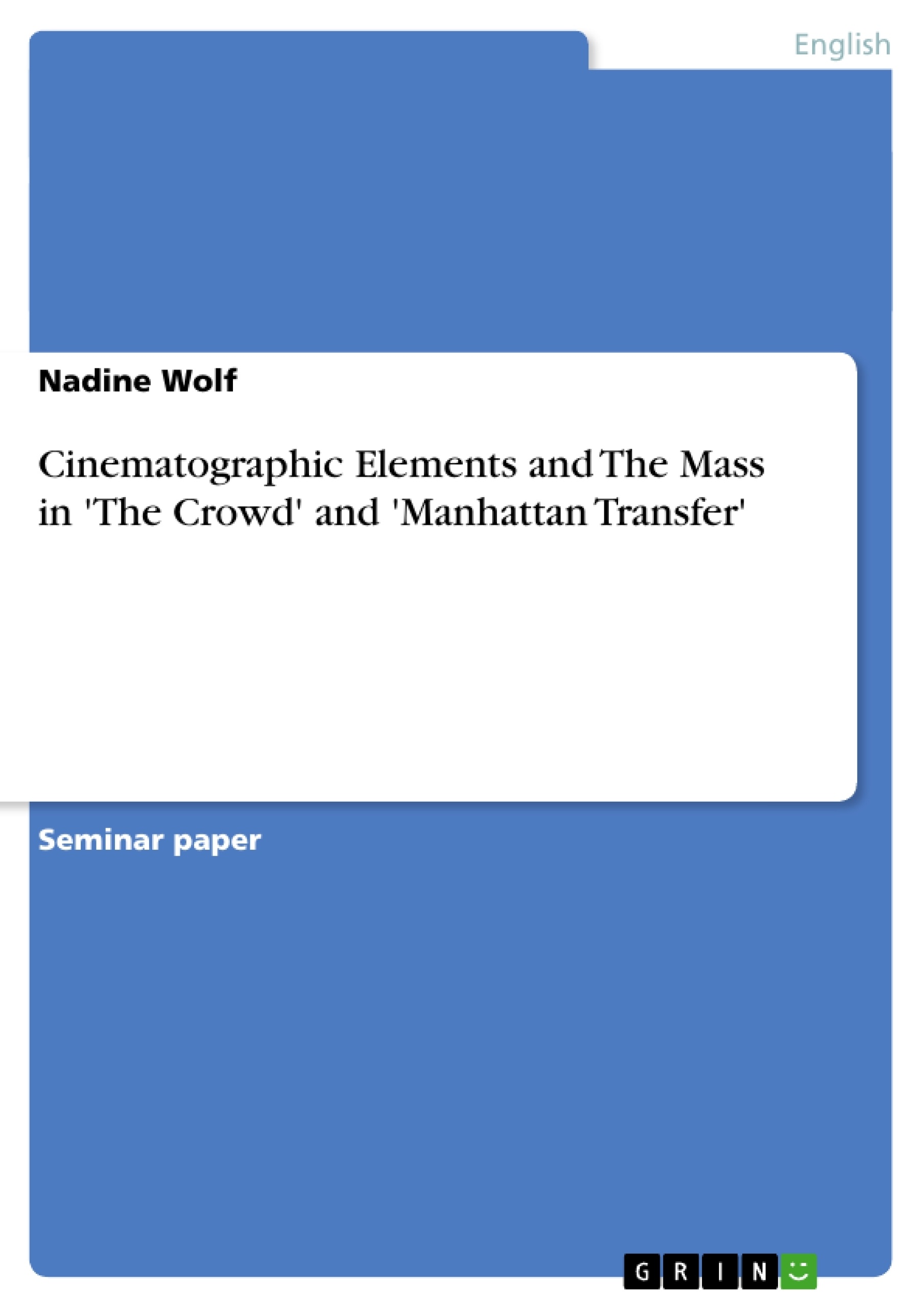The film The Crowd and the novel Manhattan Transfer are both products of the American 1920s, the Jazz Age. It was a time of great economic upswing, and money and success became very important. The society was in a state of flux as well, especially the women of the younger generation wanted to gain more independence. The Great War had not only changed the old conventions of young women, however. People moved into the big cities, harbouring great expectations and hope for a better life. New York was of course one of the cities to go to, not at last because it was considered the ‘capital’ of the Jazz spirit. This economic boom ended with the great Wall Street Crash in 1929.1
King Vidor, producer of The Crowd, was born on February 8th 1894 in Galveston, Texas. His family was of Hungarian origin, which mirrors itself in his not necessarily ordinary name. The Crowd came into the cinemas in 1928 and is one of Vidor’s “Late Silents”, as Durgnat and Simmon call them. Vidor has earned himself the label ‘epic poet’, “given to large, almost abstract expressions of a man’s role in nature and society”. One of this ‘abstract expressions’ we can find in The Crowd in the role of John Sims, of whom will be taken a closer look at later in this work.
About tree years earlier, John Dos Passos published his novel Manhattan Transfer. He was born in Chicago on January the 14th in 1896. After he graduated from Harvard College, he decided to serve in the United States Medical Corps during the end of World War I. In his novels One Man’s Initiation and Three Soldiers he processes the experiences and impressions from those yeas. He continues with an acute awareness of his senses in Manhattan Transfer, a novel full of detailed descriptions, of smells, sounds, and impressions, making the story so real one could forget it is fiction.
This work will first show some of the aspects of mass and cinematography that can be found in The Crowd, and will then continue on to those found in Manhattan Transfer. Finally, the differences and the points the two works have in common will be summed up.
Inhaltsverzeichnis (Table of Contents)
- Preface
- King Vidor's "The Crowd"
- Appearances and Depiction of the Mass
- The Crowd Makes An Appearance
- Character Analysis and Their Social Position
- Vidor's Crowd of New York
- Cinematographic Aspects
- Camera Moves
- Perspectives
- Street Scenes
- John Dos Passos' "Manhattan Transfer"
- The 'Manhattan Transfer' of New York
- Appearances and Depiction of the Mass
- Situation of Appearances
- Social Situations And A Character Analysis
- The City of New York
- Cinematographic Elements
- Quick Cuts
- Changing Focus
- 'Stage Directions', Smells, Sounds And Colours
- Symbols And Speed
- Conclusion
Zielsetzung und Themenschwerpunkte (Objectives and Key Themes)
This work examines the depiction of the mass in two distinct American cultural products from the 1920s: King Vidor's film "The Crowd" and John Dos Passos' novel "Manhattan Transfer." It explores how these works utilize cinematic and narrative elements to portray the social and individual experiences of life in New York City during the Jazz Age.
- The representation of the mass and its impact on individual lives
- The role of social class and economic aspirations in shaping individual identities
- The use of cinematographic techniques to convey themes of alienation and conformity
- The portrayal of the urban landscape as a character in itself
- The juxtaposition of individual ambitions and societal expectations
Zusammenfassung der Kapitel (Chapter Summaries)
The preview will explore the depiction of the mass in "The Crowd" and "Manhattan Transfer" focusing on the individual characters' experiences within the context of societal expectations, urban environments, and the role of economic aspirations in shaping their lives.
In the analysis of "The Crowd," we will look at how Vidor utilizes various scenes to showcase the presence and impact of the mass on John Sims' journey. The chapter will delve into the significance of the crowd in John's life, both as a symbol of his aspirations and as a force that shapes his reality.
Moving on to "Manhattan Transfer," the chapter will examine Dos Passos' multifaceted depiction of the mass in New York City. It will analyze how Dos Passos utilizes narrative techniques to capture the social situations and the dynamic nature of the urban environment. The chapter will further explore the characters' struggles within the context of social mobility and the realities of urban life.
The preview concludes with a comparison of the two works, highlighting the common themes and unique approaches taken by Vidor and Dos Passos in their portrayals of the mass and its relationship to the individual.
Schlüsselwörter (Keywords)
This preview focuses on the analysis of the mass in film and literature, particularly examining the works "The Crowd" and "Manhattan Transfer." Key themes include the representation of the mass, social class, individual aspirations, urban environment, cinematic techniques, and narrative elements.
- Quote paper
- Nadine Wolf (Author), 2005, Cinematographic Elements and The Mass in 'The Crowd' and 'Manhattan Transfer', Munich, GRIN Verlag, https://www.grin.com/document/37845



